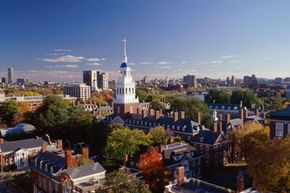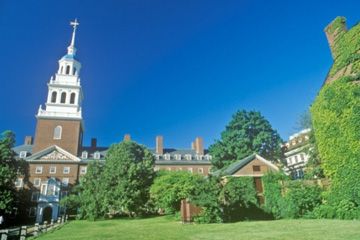For decades, low- and middle-income families have increasingly found themselves priced out of attending top private universities. Higher education has far outpaced general inflation -- 5.94 percent vs. 2.99 percent from 1989 through 2005 [source: Sopelsa]. Ivy League schools like Harvard, Columbia, Princeton and Brown now cost in the area of $50,000 a year including tuition and room and board.
The Ivy League includes eight schools: Brown University (Providence, R.I.), Columbia University (New York, N.Y.), Cornell University (Ithaca, N.Y.), Dartmouth College (Hanover, N.H.), Harvard University (Cambridge, Mass.), Princeton University (Princeton, N.J.), University of Pennsylvania (Philadelphia, Pa.) and Yale University (New Haven, Conn.). A four-year degree at one of these elite schools runs a couple hundred grand, give or take -- not a crippling cost for upper-class families, but a very crippling cost for everybody else.
Advertisement
The lowest-income students are the least able to shoulder an Ivy League tuition -- a family making $30,000 a year can't spend $50,000 a year for college. But the Ivies, partly under public pressure to put more of their endowments toward need-based aid and partly out of a real attempt at egalitarianism, have some pretty amazing financial aid programs. In some cases, Harvard or Columbia or Yale can end up costing less than a state school.
In some cases, they can cost nothing at all.
In this article, we'll find out how low-income students can earn an Ivy League degree with no financial contribution. We'll check out the details of a few representative aid programs, see who qualifies for a free ride, and look at financial-aid deadlines and procedures for those interested in applying.
There was a time when "low-income" families lived in one-bedroom fifth-floor walk-ups with drapes dividing the kitchen from the bathroom. You may be surprised to find out who's low-income now.
Advertisement


